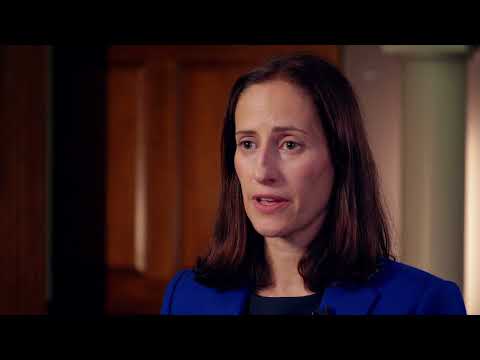
Welcome to this informative article on Understanding the New York Supreme Court Mediation Program: A Comprehensive Overview. In this text, we will delve into the intricacies of this program, providing you with a clear understanding of its purpose, process, and benefits. It is important to note that while we strive to provide accurate and up-to-date information, it is always prudent to cross-reference with other sources or seek guidance from legal advisors. So, let’s embark on this journey of unraveling the New York Supreme Court Mediation Program together.
Understanding the New York Supreme Court Mediation Program: A Comprehensive Overview
Understanding the New York Supreme Court Mediation Program: A Comprehensive Overview
The New York Supreme Court Mediation Program is an alternative dispute resolution process designed to help parties resolve their legal disputes outside of traditional litigation. This program offers parties the opportunity to work with a neutral mediator who facilitates communication and negotiation between the parties in order to reach a mutually acceptable resolution. In this article, we will provide a detailed overview of the New York Supreme Court Mediation Program, highlighting its key features and benefits.
📋 Content in this article
Key Features of the New York Supreme Court Mediation Program:
1. Voluntary Participation: Participation in the mediation program is voluntary and requires the consent of all parties involved in the dispute. The court will not force parties to mediate if they do not wish to do so.
2. Neutral Mediator: The mediation process is facilitated by a neutral mediator who does not have any stake in the outcome of the dispute. The mediator is trained in conflict resolution techniques and helps guide the parties towards a resolution.
3. Confidentiality: The mediation process is confidential, which means that anything discussed during the mediation cannot be used as evidence in court if the parties are unable to reach a settlement. This promotes open and honest communication between the parties.
4. Mediation Sessions: The mediation process typically involves several sessions where the parties and the mediator come together to discuss the issues at hand. These sessions provide an opportunity for the parties to express their concerns, explore possible solutions, and work towards a mutually agreeable resolution.
5. Cost-Effective: Mediation is often more cost-effective than traditional litigation. Parties involved in a dispute can save significant time and money by opting for mediation instead of pursuing a lengthy court battle.
6. Flexibility: Unlike court proceedings, mediation allows parties to have more control over the outcome of their dispute.
Understanding the Mediation Process: A Comprehensive Overview
Understanding the Mediation Process: A Comprehensive Overview
Mediation is a voluntary process in which parties involved in a legal dispute work together with a neutral third party, called a mediator, to find a mutually acceptable resolution. This alternative dispute resolution method is gaining popularity in the legal field due to its effectiveness in resolving conflicts outside of court.
The New York Supreme Court Mediation Program is a specific mediation program available in the state of New York. It provides parties with the opportunity to resolve their disputes in a cooperative and non-adversarial manner. The program is aimed at reducing court congestion, promoting efficient case resolution, and ultimately providing parties with more control over the outcome of their dispute.
Benefits of Mediation:
The Mediation Process:
1. Initial Meeting: The mediation process begins with an initial meeting between the mediator and the parties involved. During this meeting, the mediator explains their role, sets ground rules, and establishes a safe and respectful environment for open communication.
2. Information Gathering: The mediator works with each party to understand their perspectives, interests, and potential areas of agreement. This stage may involve exchanging documents and other relevant information.
3. Joint Sessions: Parties come together, facilitated by the mediator, to discuss their issues and explore potential resolutions. The mediator encourages open dialogue and helps parties focus on their underlying interests rather than positional bargaining.
4. Private Sessions
Understanding the New York Supreme Court Mediation Program: A Comprehensive Overview
Introduction:
In the realm of US law, it is crucial for legal professionals and interested individuals to stay current with the ever-evolving landscape of legal processes and programs. One such program that warrants attention is the New York Supreme Court Mediation Program. This article aims to provide a comprehensive overview of this program, highlighting its importance and encouraging readers to verify and cross-reference the content presented here.
The New York Supreme Court Mediation Program:
The New York Supreme Court Mediation Program is a voluntary dispute resolution process available for civil cases pending in the Supreme Court of New York State. Its primary objective is to facilitate settlement discussions between parties in a confidential, structured, and impartial environment. By offering mediation as an alternative to traditional litigation, the program aims to reduce court congestion, save costs, and promote efficiency in the judicial system.
Mediation Process:
1. Referral:
Parties involved in a civil case can be referred to the mediation program by a judge, upon motion by either party, or by mutual agreement. The court identifies cases suitable for mediation based on factors such as the complexity of the case, willingness of the parties to participate, and appropriateness for resolution outside of court.
2. Selection of Mediators:
The program maintains a panel of experienced and trained mediators who are assigned to cases based on their expertise and availability. These mediators are neutral professionals who facilitate communication, foster understanding, and guide parties towards finding mutually acceptable solutions.
3. Confidentiality:
Confidentiality is a vital aspect of the mediation program. The discussions, statements, and documents exchanged during mediation are privileged and cannot be disclosed or used as evidence in court proceedings unless agreed upon by the parties involved. This confidentiality promotes open and honest communication between parties, fostering an environment conducive to resolution.
4. Mediation Sessions:
Once assigned, mediators schedule sessions with all parties involved.
